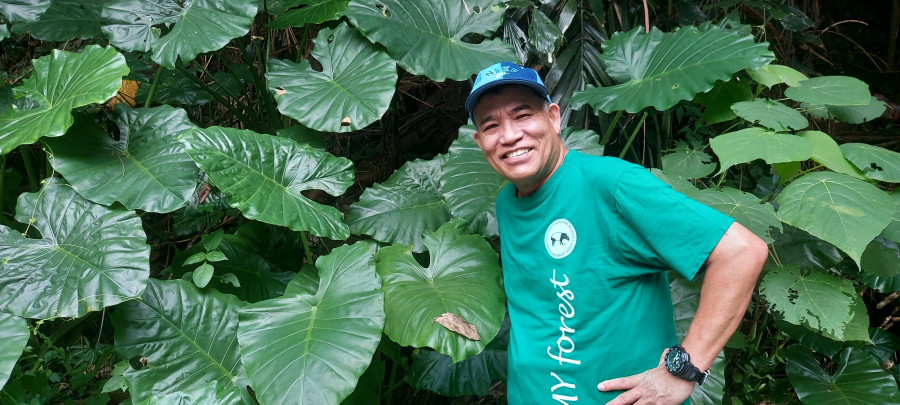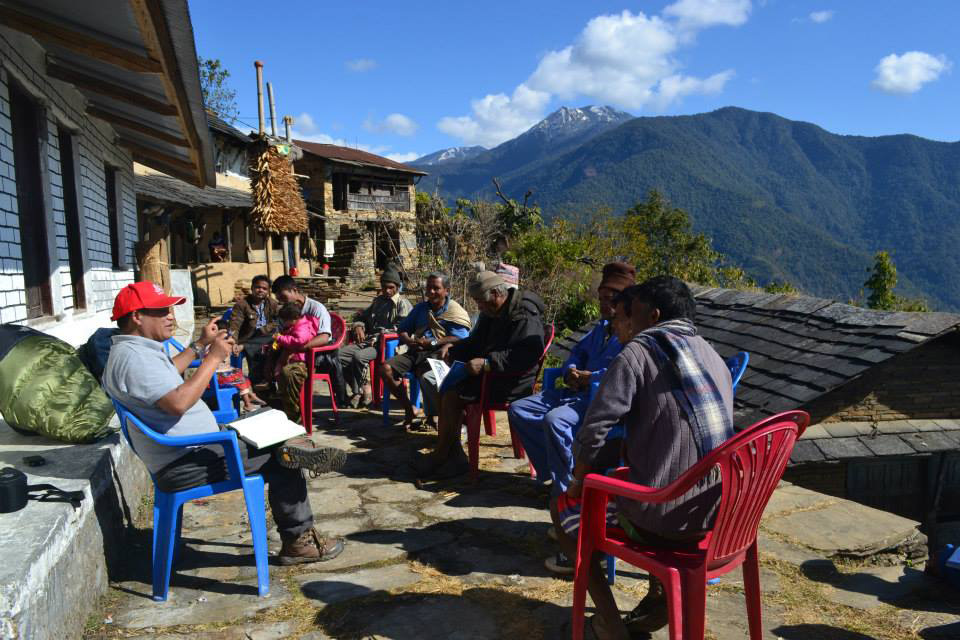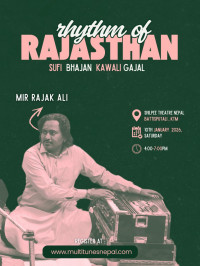Culture & Lifestyle
A life of complete harmony with nature
Sikles-born Hum Bahadur Gurung, currently serving as the Asia Partnership Manager in BirdLife International, Singapore, recounts his four decades in nature conservation.
Anish Ghimire
Hum Bahadur Gurung was born in Sikles, Kaski, in 1965. The village is situated at an altitude of 2000 meters above sea level. Gurung remembers climbing trees and plucking fruits while living there, and this, he says, laid the foundation for his love for nature. Later, he pursued his high school studies at Amar Singh High School in Pokhara.
In 1985, after completing high school, Gurung studied to become an overseer at Pulchowk Campus. It was during this time that he came across a notice about the Annapurna Conservation Area Project (ACAP), which sparked his passion for conservation.
“King Birendra had initiated the project to preserve the area,” he says. “With an influx of tourists and the establishment of numerous local lodges, pollution became a concern and we felt the need to conserve the area,” he added.
Launched in 1986, ACAP represents the biggest project of the National Trust for Nature Conservation (NTNC), previously known as the King Mahendra Trust for Nature Conservation. Gurung began working on the project as a project assistant.
The Annapurna Conservation Area stands as Nepal’s first conservation area and the largest Protected Area. It is bordered by the alpine deserts of Mustang and Tibet (China) to the north, the Kali Gandaki River to the west, the Marsyandi Valley to the east and the valleys and foothills north of the Pokhara Valley to the southern border.
Encompassing an expansive 7,629 square kilometres, ACAP is inhabited by over 100,000 individuals from diverse cultural and linguistic backgrounds. “Renowned for its rich biodiversity, ACAP is home to a plethora of life forms, boasting 1,226 species of flowering plants, 105 mammals, 518 birds, 40 reptiles and 23 amphibians,” Gurung said.
During his tenure with ACAP, he dedicated 10 years to various projects. These included initiatives such as the drinking water project, tourism development, programs for women’s empowerment, nature conservation projects, tree planting campaigns, the establishment of childcare centres for children under five to enable mothers to work, as well as training programmes for lodge management and local residents.
“After completing our conservation project, we entrusted the maintenance work to the local people,” he explains. Utilising indigenous practices and local resources to preserve the area, the project focused on fostering local community development, managing tourism and nature conservation. “At the project’s peak, 80 percent of the staff were locals,” he notes.
Furthermore, ACAP stands out as the inaugural protected area that permits local residents to reside within its boundaries, own private property and uphold their traditional rights, including access to natural resources.
In between those ten years with ACAP where he later served as the incharge officer, Gurung travelled to New Zealand to study Parks and Recreation and Tourism Management at Lincoln University in 1987. He completed both his bachelor’s and master’s degrees in the same subject, and then returned to Nepal, joining the ACAP project again, this time as the incharge.
After his tenure at ACAP, he worked with the United Nations Development Programme (UNDP) in 1996 and served until 2004. Under UNDP’s Agenda 21 project, Gurung served as the project manager. “We established our office in Surkhet and initiated local development projects across six districts,” he explains. “Our approach focused on the three pillars of development: economic, social and environmental,” he emphasises, recounting his eight years of work there.
Gurung’s team played a crucial role in formulating Nepal’s Sustainable Development Agenda at the National Planning Commission, under the leadership of the country’s prime minister.

In 2005, he went to Australia to pursue a doctor of philosophy at Griffith University, focusing on conservation tourism and protected areas. He says he is one of the few—possibly, the third—person from his home village of Sikles, to receive a university doctorate. “During my time there, I learned a lot about community development, capacity building and inspiring future generations,” he said.
During his time at the university, he recounted his works with ACAP and prepared his doctorate thesis on the topic of, ‘How ACAP Became a Model Project for Nepal and the World.’
After completing his doctorate in 2008, he was appointed CEO of Bird Conservation Nepal (BCN) from 2009 to 2012, which is part of the world’s largest nature conservation partnership, BirdLife International.
Established in 1982, BCN is an organisation in Nepal dedicated to the conservation of birds, their habitats and sites. Its mission is to foster public interest in birds, promote bird research and identify significant threats to the ongoing survival of bird species.
He then founded the Himalayan Sustainable Future Foundation in 2012, where he served as president and CEO. The organisation focuses on the conservation of biodiversity through indigenous resource management, sustainable tourism and the management of protected areas.
In 2015, he moved to Singapore to join BirdLife International, the world’s largest nature conservation partnership. BirdLife International has offices in various regions, with the Asian office located in Singapore.
Gurung serves as the network and partner development manager (Asia Partnership manager) and regional project manager. In this role, he facilitates connections between partner NGOs in the Asian region and BirdLife International’s headquarters.
Countries such as Nepal, India, Bhutan, Sri Lanka, Japan, Hong Kong, Indonesia and Thailand are member countries of BirdLife International. His primary responsibilities include capacity building for partner NGOs, enhancing networking capabilities, mobilising resources and providing guidance.
“These partner NGOs are among the most active civil society organisations dedicated to supporting birds, biodiversity, addressing climate change and improving community livelihoods,” he says.
Gurung also implemented the Asia Pacific Forest Governance Project (2017 to 2022) in Indonesia, Malaysia, the Philippines and Papua New Guinea funded by the European Commission as Regional Project Manager. “We set up the Forest Loss Dashboard and published a scientific journal for monitoring of forests with indigenous communities,” he says.
For Gurung, what started out as a desire to contribute to the feasibility study on the Annapurna region has stretched into decades of work. “After securing the scholarship to study in New Zealand, conservation became a part of my life,” he says, adding, “Because without nature there is no future.”
A firm believer of the combination of “hardwork, teamwork and network”, Gurung says his journey was always driven by the passion to empower local people and encourage them to preserve their natural surroundings. “If we instill the importance of natural surroundings and its preservation to the local people, then the project becomes a lot easier to execute,” he says.
In addition to his conservation work, he is also involved in mentoring youth for educational and career advancement, as well as within his Gurung community, where he serves as the chair of the Tamu Educational and Career Advancement Network.
He has been recognised for his contributions, winning the ‘Australian Alumni Award for Community Service’ in the 2014 Austrade Nepal Australia Alumni Excellence Awards, the Griffith University Outstanding International Alumnus Award in 2019 and the 2022 Asia Impact GameChanger award by Advance | The Global Australian Network.
“I have dedicated decades to this field and I will continue doing so in the upcoming days because working in/with nature has helped me mentally and more people should devote time outdoors,” he says with a smile.




 8.12°C Kathmandu
8.12°C Kathmandu













%20(1).jpg&w=300&height=200)

